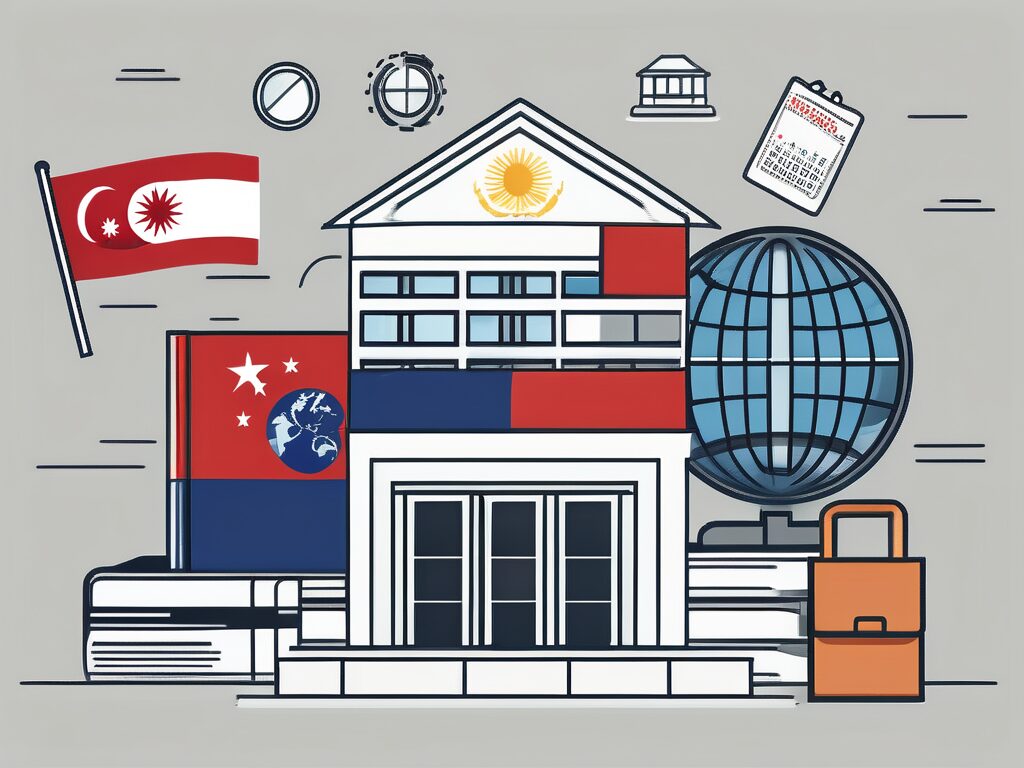Malaysia, a melting pot of cultures and traditions, offers an enticing blend of modernity and antiquity. Its vibrant cities, lush landscapes, and diverse culinary delights make it an attractive destination for international school teachers. However, before you can embark on your teaching journey in this Southeast Asian gem, you need to secure a residency permit. This article offers seven handy tips to help you navigate the process smoothly.
1. Understand the Basics
What is a Residency Permit?
A residency permit, also known as a visa, is a legal document that allows foreigners to live and work in Malaysia. It’s akin to a golden ticket that opens the door to a host of opportunities in the country. Without it, your dream of teaching in Malaysia remains just that – a dream.
Types of Residency Permits
There are several types of residency permits available in Malaysia, each catering to different needs and circumstances. For international school teachers, the most relevant is the Employment Pass (EP), which is issued to skilled foreign workers. Think of it as a VIP pass that grants you the right to work in the country.
Another option is the Professional Visit Pass (PVP), which is suitable for those who plan to stay in Malaysia for a short period. It’s somewhat like a short-term parking ticket, allowing you to park your skills in Malaysia for a limited time.
2. Secure a Job First
Before you can apply for an EP, you need to secure a job in Malaysia. It’s a bit like putting the cart before the horse; you can’t get the permit without a job offer. So, start your job hunt early and secure a position at an international school.
Once you have a job offer, your employer will initiate the EP application process on your behalf. It’s a bit like a relay race where your employer takes the baton first and runs the initial leg of the race.
3. Prepare Your Documents
Just like baking a cake requires specific ingredients, applying for a residency permit requires certain documents. These include a valid passport, job offer letter, academic certificates, and a recent passport-sized photograph. It’s a bit like gathering all your ingredients before you start baking.
Ensure that all your documents are in English or Bahasa Malaysia. If they’re in another language, you’ll need to get them translated and certified. Think of it as ensuring your ingredients are in the right form before you start mixing them together.
4. Be Patient
Applying for a residency permit is not a quick process. It can take several weeks, or even months, for your application to be processed. It’s a bit like waiting for a pot to boil; it takes time, but the end result is worth the wait.
While waiting, resist the urge to pester the immigration department for updates. Instead, use this time to prepare for your move and learn more about Malaysia. It’s a bit like letting the cake bake in the oven while you clean up the kitchen and set the table.
5. Keep an Eye on Your Passport’s Validity
Your passport must be valid for at least 18 months from the date of your application. It’s a bit like checking the expiry date on a carton of milk before you use it. If your passport is nearing its expiry date, renew it before applying for your permit.
Remember, a passport with less than six months’ validity is considered expired by many countries, including Malaysia. It’s a bit like a stale loaf of bread; technically, it’s still bread, but it’s not very appetising and won’t get you very far.
6. Be Aware of the Restrictions
While a residency permit allows you to live and work in Malaysia, it comes with certain restrictions. For instance, you can’t engage in any political activities or change your job without notifying the immigration department. It’s a bit like a library card; it gives you access to a wealth of resources, but you have to follow the rules.
Failure to adhere to these restrictions can result in penalties, including deportation. It’s a bit like breaking the library’s rules; you might lose your borrowing privileges or even be banned from the library.
7. Seek Professional Help
If the process seems daunting, consider seeking help from a professional visa consultant. They can guide you through the process and help you avoid common pitfalls. It’s a bit like hiring a tour guide when visiting a new city; they know the best routes and can help you avoid getting lost.
While this does involve an additional cost, the peace of mind and time saved can be worth it. It’s a bit like paying for a fast-track ticket at a theme park; you pay more, but you skip the queues and get to the fun faster.
In conclusion, obtaining a residency permit for international school teachers in Malaysia involves understanding the basics, securing a job first, preparing your documents, being patient, keeping an eye on your passport’s validity, being aware of the restrictions, and considering professional help. With these tips in mind, you’re well on your way to starting your teaching journey in Malaysia.
Enhance Your International Teaching Career with iQTS
As you prepare to navigate the residency permit process for teaching in Malaysia, consider fortifying your qualifications with the International Qualified Teacher Status (iQTS) Programme at UWE. The iQTS not only increases your chances of meeting stringent international school requirements but also significantly boosts your career progression and professional development. With the iQTS, you’ll join a thriving community of educators, gain a deeper understanding of global education systems, and enjoy the flexibility of balancing work with study. Don’t let barriers hold you back. Make Your Next Step towards a fulfilling international teaching career with iQTS.

